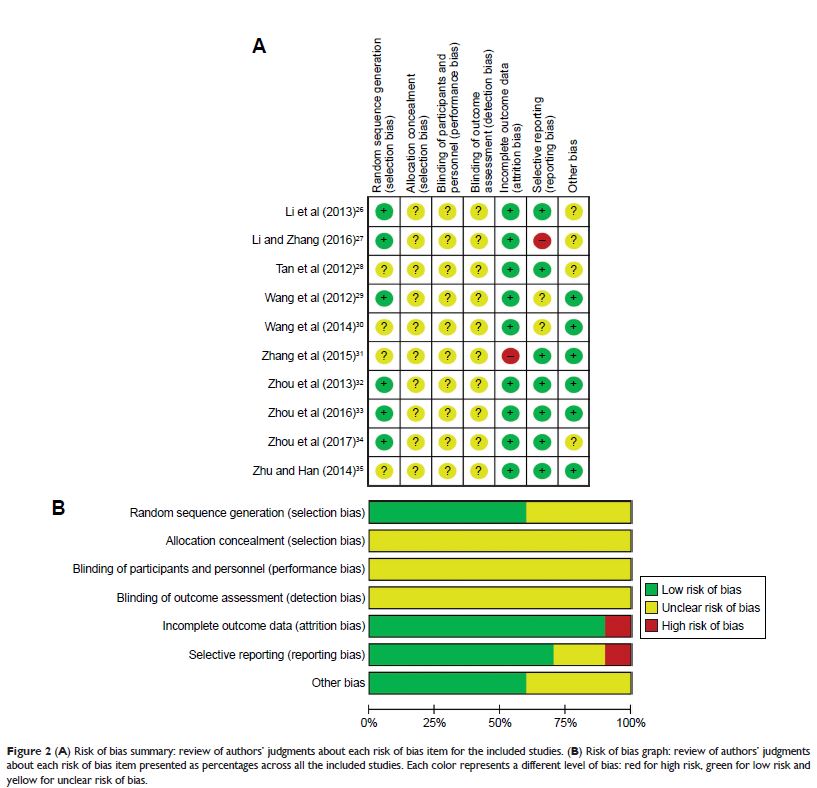108985
论文已发表
注册即可获取德孚的最新动态
IF 收录期刊
- 3.4 Breast Cancer (Dove Med Press)
- 3.2 Clin Epidemiol
- 2.6 Cancer Manag Res
- 2.9 Infect Drug Resist
- 3.7 Clin Interv Aging
- 5.1 Drug Des Dev Ther
- 3.1 Int J Chronic Obstr
- 6.6 Int J Nanomed
- 2.6 Int J Women's Health
- 2.9 Neuropsych Dis Treat
- 2.8 OncoTargets Ther
- 2.0 Patient Prefer Adher
- 2.2 Ther Clin Risk Manag
- 2.5 J Pain Res
- 3.0 Diabet Metab Synd Ob
- 3.2 Psychol Res Behav Ma
- 3.4 Nat Sci Sleep
- 1.8 Pharmgenomics Pers Med
- 2.0 Risk Manag Healthc Policy
- 4.1 J Inflamm Res
- 2.0 Int J Gen Med
- 3.4 J Hepatocell Carcinoma
- 3.0 J Asthma Allergy
- 2.2 Clin Cosmet Investig Dermatol
- 2.4 J Multidiscip Healthc

脐血干细胞移植作为中国人肝硬化辅助治疗的策略:有效性和安全性的荟萃分析
Authors Tao HM, Li YF, Wang TT, Zhou CH
Received 20 November 2017
Accepted for publication 10 January 2018
Published 26 February 2018 Volume 2018:14 Pages 417—440
DOI https://doi.org/10.2147/TCRM.S157603
Checked for plagiarism Yes
Review by Single-blind
Peer reviewers approved by Dr Hoa Le
Peer reviewer comments 2
Editor who approved publication: Professor Deyun Wang
Objective: The
aim of the study was to evaluate the efficacy and safety of umbilical cord
blood stem cells (USCs) transplantation combined with routine supportive
therapy (RST) for liver cirrhosis (LC).
Materials and
methods: Clinical trials involved in
this research were searched from Web of Science, PubMed, EMBASE, Cochrane
Library, Wanfang and CNKI database. Treatment effects, quality of life (QoL),
adverse events and other outcome measures were extracted and evaluated.
Results: A total of 10 trials including 616 LC patients were involved in this
study. Based on our analysis, the liver function of LC patients was
significantly improved after USCs transplantation and RST combined therapy,
indicated by decreased total bilirubin, alanine aminotransferase, aspartate
aminotransferase levels and prothrombin time and increased serum albumin level
and prothrombin activity. Compared to those treated by RST alone, patients
treated by combined therapy showed more satisfied treatment effects, improved
QoL reflected by improved appetite (odds ratio [OR]=5.43, 95% CI=2.84 to
10.38, P <0.00001) and relieved fatigue
(OR=4.33, 95% CI=0.87 to 21.60, P =0.07), ascetic
fluid (OR=4.56, 95% CI=2.69 to 7.74, P <0.00001),
abdominal distension (OR=4.01, 95% CI=1.34 to 12.02, P =0.01) and edema (OR=2.69, 95%
CI=0.23 to 31.72, P =0.43). No serious
adverse events occurred during USCs therapy.
Conclusion: USCs transplantation is a safe and effective adjuvant therapy for
RST-treated LC, possibly through improving patients’ liver function.
Keywords: umbilical cord blood stem cells, routine supportive therapy, liver
cirrhosis, meta-analysis
